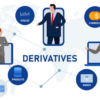Algorithmic Trading Robots
Algorithmic trading, also known as automated or black box trading, refers to the use of computer programs to execute trades on financial markets. These trades are based on pre-determined rules and algorithms, which are designed to identify buying or selling opportunities and execute trades automatically.
Algorithmic trading is typically used by hedge funds, investment banks, and other financial institutions to execute large trades quickly and efficiently. It can also be used by individual traders, who can use algorithmic trading software to execute trades on their behalf.
There are several types of algorithms that can be used in algorithmic trading, including:
- Market-making algorithms: These algorithms aim to profit from the spread between the buy and sell prices of a security by placing orders to buy and sell at the same time.
- Arbitrage algorithms: These algorithms aim to profit from price discrepancies between different markets by simultaneously buying and selling the same security on different exchanges.
- Trend-following algorithms: These algorithms aim to profit from trends in the market by buying securities when they are rising in price and selling them when they are falling.
- High-frequency trading algorithms: These algorithms use advanced technology and sophisticated algorithms to execute trades at extremely high speeds, often within a few milliseconds.
There are several benefits to using algorithmic trading, including:
- Increased speed and efficiency: Algorithmic trading allows traders to execute trades faster than they could manually, which can be particularly useful in fast-moving markets.
- Reduced emotional bias: Algorithmic trading removes the human element from the trading process, which can help to eliminate emotional biases that may influence decision-making.
- Improved accuracy: Algorithmic trading algorithms are based on pre-determined rules and are not subject to human error, which can lead to more accurate trade execution.
However, there are also some potential drawbacks to algorithmic trading, including:
- Complexity: Algorithmic trading can be complex and requires a high level of technical knowledge to implement and maintain.
- Black box risk: Because algorithmic trading is based on pre-determined rules and algorithms, it can be difficult for traders to understand exactly how and why a trade was executed. This lack of transparency can be a concern for some investors.
- Dependence on technology: Algorithmic trading relies on advanced technology and algorithms, which can be vulnerable to errors or malfunctions.
Overall, algorithmic trading is a rapidly growing trend in the financial industry, and it is likely to continue to evolve and become more widely adopted in the future. While it has the potential to offer significant benefits, it is important for traders to carefully consider the potential risks and drawbacks before implementing algorithmic trading strategies.











